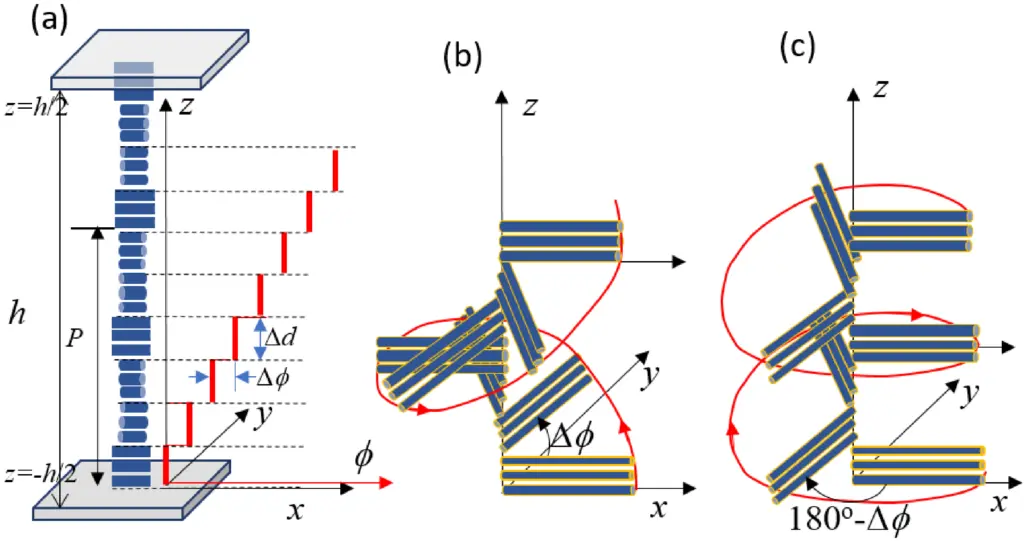Stratified optical media are thin layers of optical materials stacked together. They can manipulate light in unique ways, and are used in many applications like flat panel displays, optical filters, and medical devices. In aa recent research study led by Lang Hu of the Materials Science Program and Advanced Materials and Liquid Crystal Institute, Kent State University, researchers examined a type of stratified media where the orientation of each layer is twisted a bit compared to the one beneath it.

The authors studied what would happen if they twisted layers of liquid crystals in a stepwise manner, meaning that each layer is rotated by a certain angle compared to the one below it. This kind of arrangement doesn’t naturally occur except in a certain kind of liquid crystal called cholesteric liquid crystals, where the twist is very small. However, this concept can be practically applied by using stretched polymer films, which can be precisely controlled and layered to achieve the desired stepwise twist.

One finding was that the right-handed (clockwise) and left-handed (counter-clockwise) spirals could coexist in these stepwise twisted media, and they verified this using mathematical tools like Fourier transform and Berreman 4×4 matrix method. This has interesting implications for how the layered media interact with light, causing multiple reflection peaks and influencing the light’s circular polarization.
As of now, they haven’t been able to test these theoretical findings against real-world data, due to the lack of relevant experiments. However, their theoretical results are in line with what they would expect based on Maxwell’s equations, a set of fundamental principles governing how light and electromagnetic fields behave.
The authors plan to continue studying this phenomenon, including layer structures with varying twist angles, and comparing their predictions with experimental results. These findings could lead to improvements in the design and performance of optical films.
For instance, if they use a 90-degree twist angle, they can achieve very high reflectance, meaning most of the light hitting the film gets reflected. This can make a display brighter. If they use an 85-degree twist, they can achieve a wide reflection bandwidth, which means the film can reflect a broad range of colors. They can also achieve reflection of very short wavelengths, shorter than the thickness of the layers, by using high order helical Fourier components, which involves manipulating the spiral structure of the layers at a deeper level.
These advancements have many practical applications, most notably, in how they can be used to make flat panel displays brighter and more color-rich.
Reference
Hu, L., Zhou, Z., Zhang, X., Halder, S., Shin, Y., & Yang, D.-K. (2023). Reflection of stepwise twisted stratified anisotropic optical media. Optical Materials Express, 13(7), 1956–1973. https://doi.org/10.1364/OME.489163

